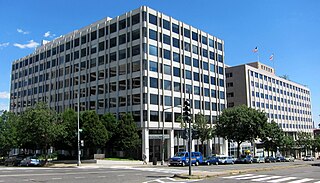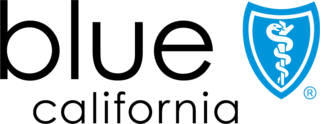
A psychologist is a professional who practices psychology and studies mental states, perceptual, cognitive, emotional, and social processes and behavior. Their work often involves the experimentation, observation, and interpretation of how individuals relate to each other and to their environments.
A nonprofit organization (NPO), also known as a nonbusiness entity, nonprofit institution, or simply a nonprofit, is a legal entity organized and operated for a collective, public or social benefit, as opposed to an entity that operates as a business aiming to generate a profit for its owners. A nonprofit organization is subject to the non-distribution constraint: any revenues that exceed expenses must be committed to the organization's purpose, not taken by private parties. Depending on the local laws, charities are regularly organized as non-profits. A host of organizations may be nonprofit, including some political organizations, schools, hospitals, business associations, churches, foundations, social clubs, and consumer cooperatives. Nonprofit entities may seek approval from governments to be tax-exempt, and some may also qualify to receive tax-deductible contributions, but an entity may incorporate as a nonprofit entity without having tax-exempt status.

Parenteral nutrition (PN), or intravenous feeding, is the feeding of nutritional products to a person intravenously, bypassing the usual process of eating and digestion. The products are made by pharmaceutical compounding entities or standard pharmaceutical companies. The person receives a nutritional mix according to a formula including glucose, salts, amino acids, lipids and vitamins and dietary minerals. It is called total parenteral nutrition (TPN) or total nutrient admixture (TNA) when no significant nutrition is obtained by other routes, and partial parenteral nutrition (PPN) when nutrition is also partially enteric. It is called peripheral parenteral nutrition (PPN) when administered through vein access in a limb rather than through a central vein as in central venous nutrition (CVN).

Pharmacy is the science and practice of discovering, producing, preparing, dispensing, reviewing and monitoring medications, aiming to ensure the safe, effective, and affordable use of medicines. It is a miscellaneous science as it links health sciences with pharmaceutical sciences and natural sciences. The professional practice is becoming more clinically oriented as most of the drugs are now manufactured by pharmaceutical industries. Based on the setting, pharmacy practice is either classified as community or institutional pharmacy. Providing direct patient care in the community of institutional pharmacies is considered clinical pharmacy.

In pharmacology and toxicology, a route of administration is the way by which a drug, fluid, poison, or other substance is taken into the body.
A dietitian, medical dietitian, or dietician is an expert in identifying and treating disease-related malnutrition and in conducting medical nutrition therapy, for example designing an enteral tube feeding regimen or mitigating the effects of cancer cachexia. Many dietitians work in hospitals and usually see specific patients where a nutritional assessment and intervention has been requested by a doctor or nurse, for example if a patient has lost their ability to swallow or requires artificial nutrition due to intestinal failure. Dietitians are regulated healthcare professionals licensed to assess, diagnose, and treat such problems. In the United Kingdom, dietitian is a 'protected title', meaning identifying yourself as a dietitian without appropriate education and registration is prohibited by law.

A feeding tube is a medical device used to provide nutrition to people who cannot obtain nutrition by mouth, are unable to swallow safely, or need nutritional supplementation. The state of being fed by a feeding tube is called gavage, enteral feeding or tube feeding. Placement may be temporary for the treatment of acute conditions or lifelong in the case of chronic disabilities. A variety of feeding tubes are used in medical practice. They are usually made of polyurethane or silicone. The outer diameter of a feeding tube is measured in French units. They are classified by the site of insertion and intended use.

A charitable organization or charity is an organization whose primary objectives are philanthropy and social well-being.
A 501(c) organization is a nonprofit organization in the federal law of the United States according to Internal Revenue Code. Such organizations are exempt from some federal income taxes. Sections 503 through 505 set out the requirements for obtaining such exemptions. Many states refer to Section 501(c) for definitions of organizations exempt from state taxation as well. 501(c) organizations can receive unlimited contributions from individuals, corporations, and unions.

Blue Shield of California is a mutual benefit corporation and health plan founded in 1939 by the California Medical Association. It is based in Oakland, California, and serves 4.5 million health plan members and more than 65,000 physicians across the state. Blue Shield of California was founded as a not-for-profit organization. As of 2014, it is no longer tax-exempt in California and has been paying federal taxes for several years before that.
The American Board of Internal Medicine (ABIM) is a 501(c)(3) nonprofit, self-appointed physician-evaluation organization that certifies physicians practicing internal medicine and its subspecialties. The American Board of Internal Medicine is not a membership society, educational institution, or licensing body.

Medical food is food that is specially formulated and intended for the dietary management of a disease that has distinctive nutritional needs that cannot be met by normal diet alone. In the United States, it was defined in the Food and Drug Administration's 1988 Orphan Drug Act Amendments and subject to the general food and safety labeling requirements of the Federal Food, Drug, and Cosmetic Act. In Europe, the European Food Safety Authority established definitions for "foods for special medical purposes" (FSMPs) in 2015.
The American Board of Nuclear Medicine (ABNM) certifies physicians as specialists in the practice of nuclear medicine. Diplomates of the ABNM are called nuclear medicine physicians. The ABNM is one of the 24 member boards of the American Board of Medical Specialties (ABMS).
The European Society for Clinical Nutrition and Metabolism (ESPEN) is an organization in the field of enteral and parenteral nutrition and promotes basic and clinical research, basic and advanced education, organization of consensus statements about clinical care and care quality control.

Intravenous sugar solution, also known as dextrose solution, is a mixture of dextrose (glucose) and water. It is used to treat low blood sugar or water loss without electrolyte loss. Water loss without electrolyte loss may occur in fever, hyperthyroidism, high blood calcium, or diabetes insipidus. It is also used in the treatment of high blood potassium, diabetic ketoacidosis, and as part of parenteral nutrition. It is given by injection into a vein.
Clinical nutrition centers on the prevention, diagnosis, and management of nutritional changes in patients linked to chronic diseases and conditions primarily in health care. Clinical in this sense refers to the management of patients, including not only outpatients at clinics and in private practice, but also inpatients in hospitals. It incorporates primarily the scientific fields of nutrition and dietetics. Furthermore, clinical nutrition aims to maintain a healthy energy balance, while also providing sufficient amounts of nutrients such as protein, vitamins, and minerals to patients.
Nutrition in Clinical Practice is a peer-reviewed medical journal that covers the scientific basis and clinical application of nutrition and nutrition support research. The journal was established in 1986 with Philip Schneider as the founding editor. The current editor-in-chief is Jeanette M. Hasse. It is an official publication of the American Society for Parenteral and Enteral Nutrition and is published by Wiley.

The Journal of Parenteral and Enteral Nutrition is a peer-reviewed medical journal that publishes papers in the field of nutrition and dietetics. The journal was established in 1977 with Michael D. Caldwell as the founding editor. The current editor-in-chief is Kenneth B. Christopher. It is the official publication of the American Society for Parenteral and Enteral Nutrition and is published by Wiley.
Stanley John Dudrick was a surgeon who pioneered the use of total parenteral nutrition (TPN).
The National Board of Physician Nutrition Specialists (NBPNS) is a nonprofit organization that certifies physicians practicing nutrition medicine. Established in 1997, NBPNS maintains credentialing standards, examination assessments, and offers certification for physician nutrition specialists. Eligibility requires completion of a recognized nutrition fellowship program, sufficient continuing medical education (CME), or comparable training. The NBPNS is affiliated with the American Society for Nutrition. Member societies include: the American Society for Parenteral and Enteral Nutrition, the American Association of Clinical Endocrinologists, American Society for Clinical Nutrition, North American Association for the Study of Obesity, American College of Nutrition, American Gastroenterological Association, and the Canadian Society for Clinical Nutrition.










